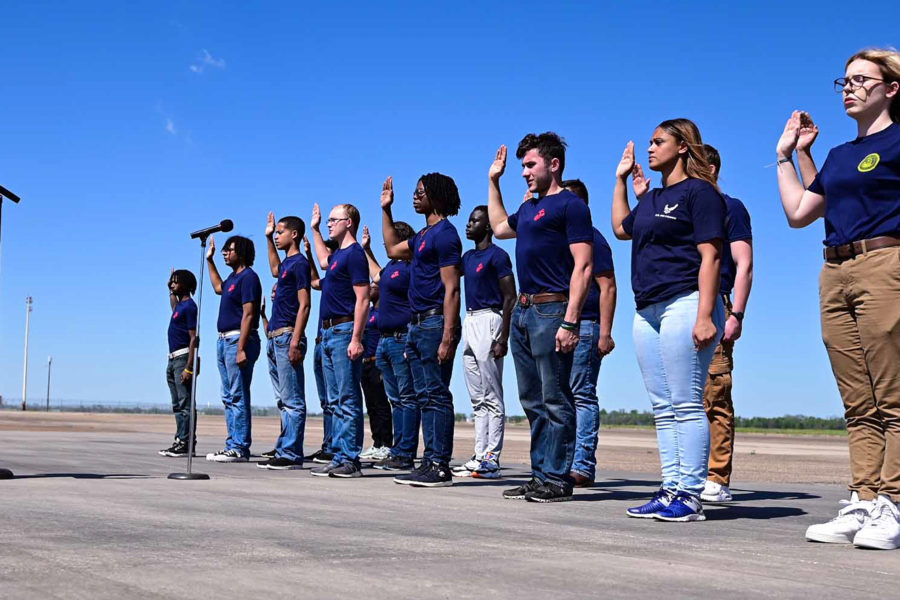A tweak to the Air Force accession process meant to help recruits stay safe has also made it easier for women to join more physically-demanding career fields. The Air Force changed its strength aptitude test in January from a clean-and-press style strength test to a deadlift test. While the mode of lifting has changed, the minimum weight required to join the Air Force, 40 pounds, has not.
Air Force Times first reported the change.
Recruits take the strength aptitude test on an incremental lifting machine at Military Entrance Processing Stations to prove they are strong enough for day-to-day military life. The minimum weight requirement increases for career fields that are more physically demanding, though the maximum weight caps off at 110 pounds. Security forces requires 70 pounds, while munitions systems (the Airmen who assemble bombs) requires 60 pounds, and firefighting requires 100 pounds, according to a 2018 study conducted by RAND.
The Air Force Recruiting Service (AFRS) told Air & Space Forces Magazine that the change was made in part due to policy guidance from the 711th Human Performance Wing at Wright Patterson Air Force Base, Ohio. The 711th in turn took guidance from the Centers for Disease Control and Prevention advising “a neutral position” where minimal twisting at the legs, torso, or shoulders allows recruits to lift more weight more safely compared to the clean-and-press.
“It has increased our applicant pool, but the most significant impact has been to the job specialty qualifications which are now more gender diverse,” the AFRS public affairs office said.
Since the change took effect in January, 4,111 women have gone through the new strength test, of whom 1,162 accessed into ‘operational’ specialties such as aircraft maintenance, munitions, security forces, and special warfare/combat support, AFRS said, though it was not immediately clear how much of an increase that represented over previous years.
The Air Force acting chief of staff, Gen. David W. Allvin, referenced the change in written testimony sent to the Senate Armed Services Committee in September, saying the updates “better reflect the actual demands of the career fields thus expanding career field opportunities, especially for our female recruits[.]”
Allvin referred to other changes in the recruiting process, such as body composition and tattoo standards, to help reduce barriers to service. The Air Force missed its Active-Duty recruiting goal by about 10 percent this year, with slightly worse numbers for the Guard and Reserve. The body composition and tattoo standards have allowed in 700 Airmen who might not have been able to join otherwise, the general said.
“Throughout, we have maintained the focus on quality and will follow-up long term to ensure that any changes made thus far have not had a negative impact on readiness or fitness of the force,” he said. “If confirmed, I will ensure continuous review of accession standards and also apply judgment as to when and where we can adjust or waive as appropriate.”
